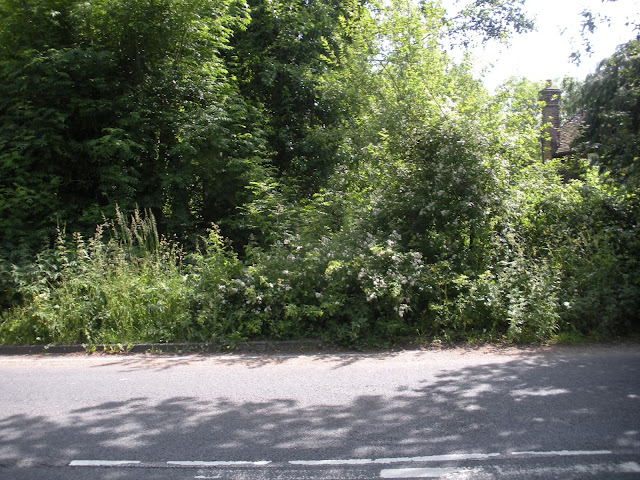For the navies and engineers there was little respite as they had to build the line to Cranbrook within a short time before the act of parliament allowing the railway expired. In late Victorian times 'railway mania' had largely ran its course and the county was criss crossed with lines. There were several railway companies enviously guarding their patch of Kent, yet there were still three towns towards the south east of the county not yet served by a railway; Cranbrook, Tenterden and the small town of Hawkhurst, if they could extend the line another six miles to the centre of Cranbrook its economic success was almost assured, and if necessary perhaps the SER could then get other Acts of Parliament later to extend east towards Tenterden.
The day of official opening saw this Cudworth 118 bedecked in a union flag and hops arrive in September 1892. Holman Fred Stephens (in white suit and bowler hat) poses with the driver and fireman, the curate of Horsmonden, immediately behind him with cane, who was ambivalent about the railway and 'would do nothing to oppose it' has also wormed his way into the photograph.
------------------------
A year after opening, the people of Goudhurst successfully petitioned the SER to change the name to 'Goudhurst Station'. The station was not a complete success due to the distance from the village it served, although a few private carriers began operating between the station and the village and people did expect to walk further in those days, still it served the local farms better.
------------------------
A 1950's photo showing the end of the hop picking season where a crowd of Londoners are standing on the platform with their prams and luggage, about to catch the train home.
At 41.1 miles from Charing Cross and 6.3 miles from Paddock Wood Station most of the traffic was farm traffic although surprisingly they still managed to boast 43 season tickets holders by 1949.
At the back of the station were two goods sidings but unlike Horsmonden there was also a goods shed and crane.
To the south the railway crossed the A262 road via a level crossing and then ran on between the Green Cross Inn and Finchcocks Estate. Being the fourth level crossing heading south on the line it was also by far the busiest road. Behind the up platform stood the goods yard and crane, there were three sidings. The River Teise ran very close and crossed the line under a bridge just north of the platform. Apart from the road to the south, fields surrounded the station. Being much more exposed than Horsmonden Station it must have been idyllic in summer but unpleasant on a windy winters day.
Another early photograph of the station with some of the staff and passengers featured, there appears to be a lot of baggage stacked at the end of the platform.
This photo is looking down the line from the down platform, it gives a good view of some of the original oil lanterns (not all of which were completely erect after nearly seventy years service).

These were to be the last paying passengers from the 'Farewell to Steam' event the day after official closure. Crowds appeared with cameras for the last ever train. If only the railway had regularly received this amount of patronage it would have survived.
-----------------------------
Two houses were built in the 1970's over the station and goods yard sites. I popped down there with a friend a few days ago and managed to snap a few pictures.
Looking north over the road and site of the level crossing to where the station once stood.
Two images to the south looking into the overgrown track bed. In the top one part of the crossing keepers cottage roof is just discerable. It seems strange today that the SER would build a house just to employ someone exclusively to open and close a level crossing gate a few times a day when there were other station staff working at the station. Today no doubt one person would be employed to perform numerous functions.
The above oasts (now converted to houses) appear in a lot of old photos of the station. I think I was standing just about on the site of the signal box when I took it (part of which would now be underneath the road which has subsequently been widened).
The above oasts (now converted to houses) appear in a lot of old photos of the station. I think I was standing just about on the site of the signal box when I took it (part of which would now be underneath the road which has subsequently been widened).
Above Paula outside the Green Cross Inn (this place features on an early twentieth century map of the station, although it was called something else fifteen years ago when the present owners took over). Inside the staff are pleasant and the pub specialises in seafood, there are a number of old photographs on the wall showing the station as it was.
The local's were very friendly too, especially as fish was on the menu. This cat was very well behaved actually he just hung around and feigned indifference but didn't pester us.
Two images looking into the sight of the track bed taken from the beer garden of the Green Cross Inn, (the line ran down here in a slight cutting, as soon it would cross under a bridge).
































